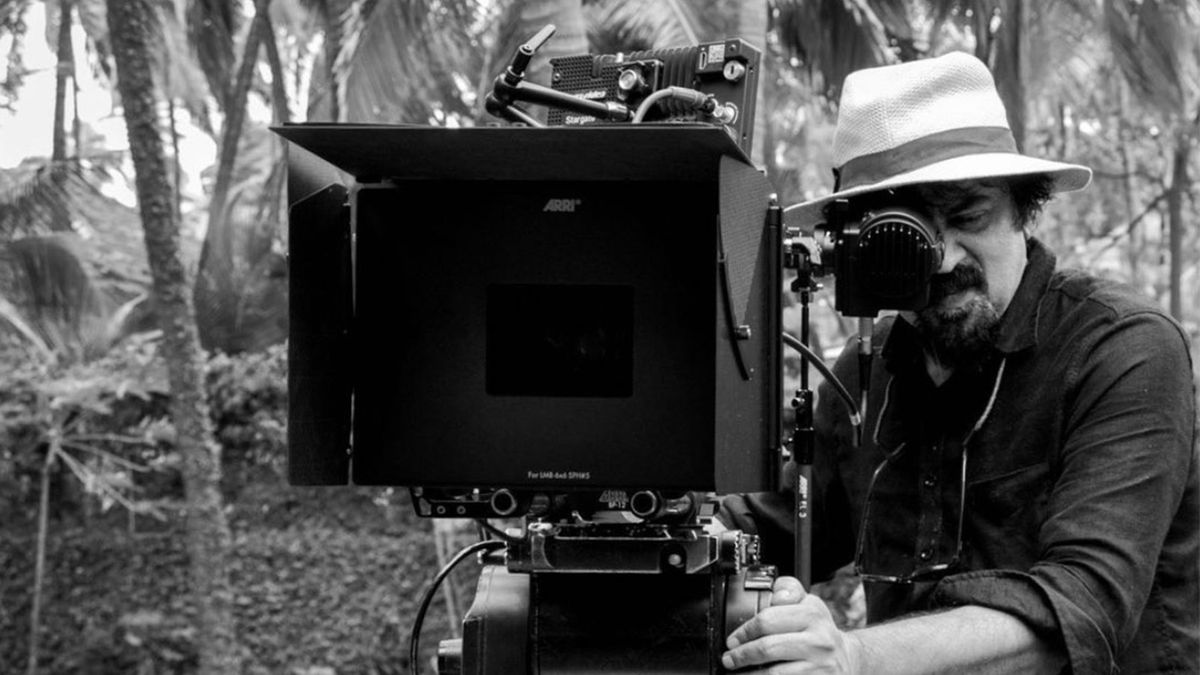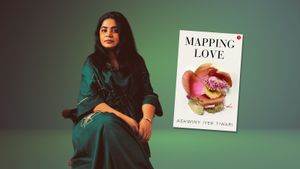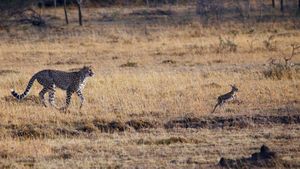The magnificent vistas of Yeh Haseen Wadiyan from the film Roja have the ability to inspire the millennial wish of wanderlust. While the song foot-tapping Chaiya Chaiya from Dil Se… will make you, deep within your heart, take up the same foolish dare-devilry as Shahrukh Khan and Malaika Arora. The one man who was able to capture the imagery and evoke such strong feelings, for these films and more, is an award-winning cinematographer and director Santosh Sivan.
With more than 50 feature films under his belt, Sivan is an icon in filmmaking. Last year, he shot Project Agni with Arvind Swamy for Mani Ratnam’s anthology series Navrasa for Netflix. And earlier this year, his Malayalam directorial project, Jack N’ Jill premiered. But not the kind to sit idle or rest on his laurels, Sivan already has a full roster of projects, which included another Netflix anthology based on short stories of Malayalam author MT Vasudevan Nair. More exciting is the children’s film that he is working on with Mohanlal on the latter’s directorial debut—Barroz: Nidhi Kaakkum Bhootham, based on the book Barroz: Guardian of D' Gama's Treasure by Jijo Punnoose.
Santosh Sivan’s passion for cinema and photography is partly genetic and partly passion. His father, Sivan, was also an award-winning cinematographer. It was he who introduced his son to the magic of lenses and cameras. However, Santosh Sivan creative journey started with sketching and then he progressed onto photography and eventually films. This evolution and years of combined experience make him the perfect ambassador for Canon Cinema EOS. In a tête-à-tête, even shares that it was a Canon camera that he used when he started photography.
A man so deeply involved in his craft has seen the filmmaking universe over the three decades. He too has continually adapted and pushed the boundaries when no one else dared. He fondly remembers the shoot of Chaiya Chaiya for Dil Se…; on the train, Shahrukh said to him, “Santa, the camera is shaking,” fearing the shot won’t come through. Sivan quipped back, “We are on a train, of course, it’ll shake!” But his confidence in his camera and his masterful setup were part of the legendary song and video. This is also a testament to Sivan’s humour that was generously sprinkled all through our conversation on the sidelines of the inauguration of Canon's EOS Cinema Excellence Suite in Mumbai. Edited excerpts:
How did your association with the visual medium begin?
My visual language journey started with sketching. It was fantastic because you can start observing your surrounding in greater detail. Later I picked up a camera. It used to be a film camera in those days, so I learnt how to process both black and white as well as colour photographs.
The camera proved to be a very interesting tool, giving access to places which one ordinarily won’t be able to. I also used to teach workshops on still photography and printing before I actually started cinematography. It took me to remote places of India such as corners of Tamil Nadu, tribal areas of Bastar, and deep into Arunachal Pradesh where I used to teach kids. It was great learning for me.
How has the visual language changed with digitisation?
Visual language has become much closer to people, which is good because if you understand that language very well, you also appreciate it. Today, we find that the children are more interesting taking pictures on the phone, which is great. Digitization has given a voice to many and allowed people to capture moments and images that they would not have been able to do on film. Earlier, cameras, the films and their processing were an expensive affair—a rich man’s delight, if you will.
Therefore, technology has helped a lot of very interesting independent voice to come up that would not have been heard if it was not for digital small compact and easy-to-use cameras. I used the Canon EOS C70 for my Netflix series recently. I did a Tamil film, Thuppaki, that was later made as Holiday in Hindi, where we shot all across Mumbai with digital cameras. It was all candid without anyone knowing something that can only be achieved with a small camera set up.
There is a debate about analogue versus digital. What is your stance on the matter?
Digital has a longer original life; it is not a literal copy it is an equal of the original. It’s not like the reel will get scratched while being played in a theatre. As a matter of fact, the first digital film I shot was on analogue. Like audio, analogue video adds softness to the visuals. Digital on the other hand has this quality of being too sharp. It is less kind to human skin and flaws because of the high resolution, the details are going to be more vivid.
What sort of evolution have you seen in Indian filmmaking since you began your career?
I have always believed that cinema is a theatre experience. It has a larger-than-life attribute that you can’t enjoy on television. But when the pandemic hit, OTT platforms came as a way of continuing storytelling aspirations and provided employment for so many people.
Being on digital platforms has also somewhere narrow the margin that Indian films had with the west. And since I also work abroad quite a bit, and in terms of post-production and effects, we are as good as them.
Do you think OTTs have helped democratise Indian films?
I think it is one of the main advantages of OTT is that people started seeing beyond language. You know, I will see a Spanish film with subtitles It is a like a very big film festival happening all the time! It is like a flowerpot in your home, you will never want it to become an unmanageable tree at home. For trees, you will always go outside to a park or forest. Regional films earlier had limited exposure are now viewed by everyone but there is also a fear of them becoming too big.
What is your opinion on the new breed of filmmakers in India?
I think we have a fair bit of talent I feel. Especially people who embrace their cultural sensibilities and use that in their stories. But today if you look at it very closely, you will find that the film and cinematography courses are for the rich. It's very expensive for a lot of talented young people. I like to do my bit by going to tribal areas and conduct workshops with the youth. A few talented ones have assisted me on projects and have even travelled abroad! These young people who lack the economic wherewithal have an artistic quality which you cannot replace. And it is important to encourage these people.
Director or a cinematographer, which hat do you prefer?
I think that's really directing is much more satisfying, but cinematography provides zen. As a cinematographer, you don't have to interact with people. You work in sync with nature and you don't get phone calls producers and actors (laughs). There is a lot of PR work when it comes to direction, and you need to project a radiance.




